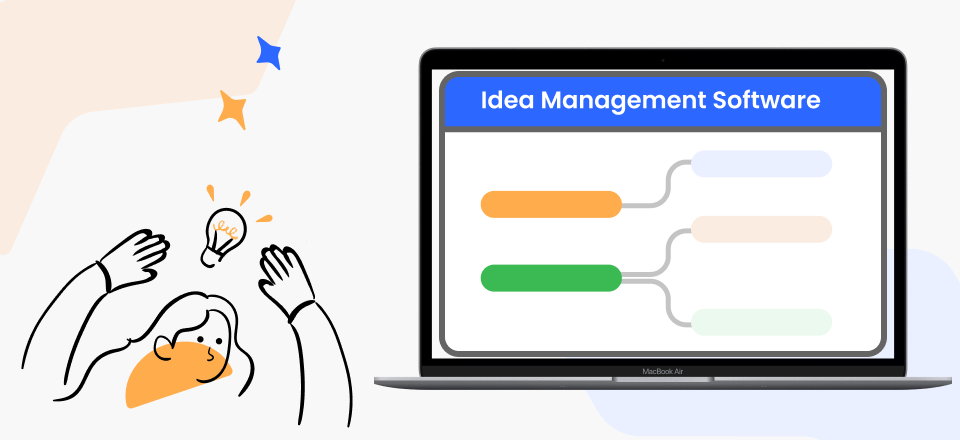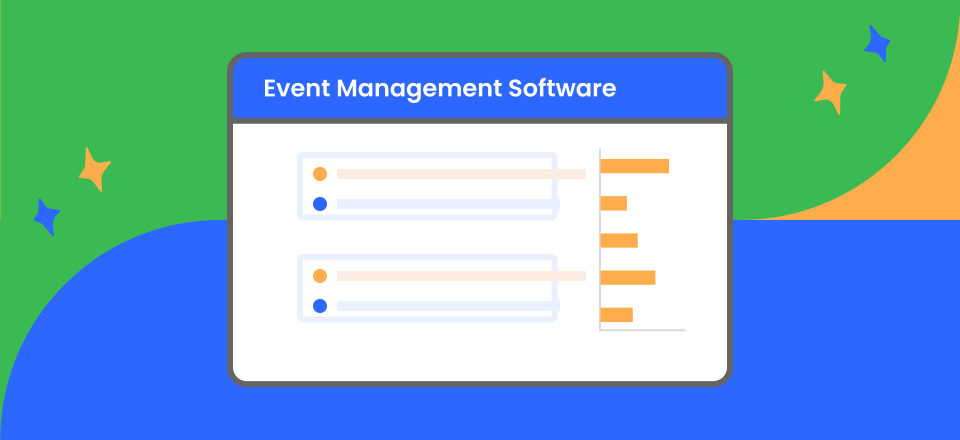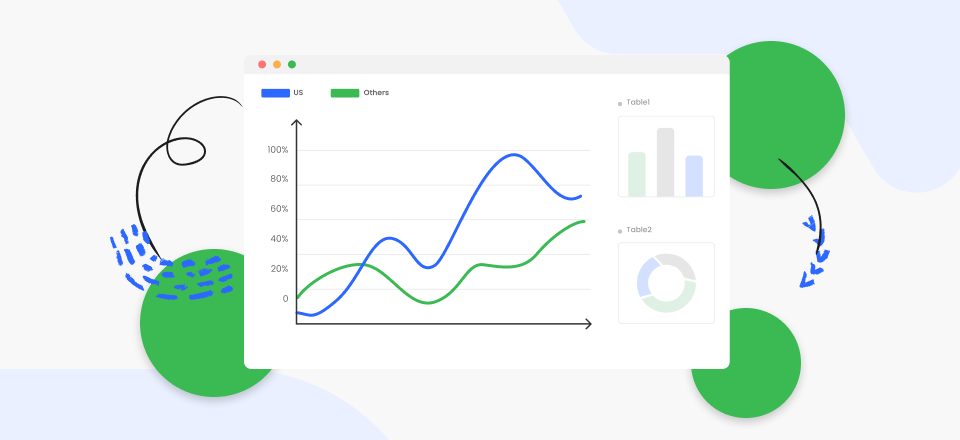The internet is constantly evolving and new websites and web-based apps are being developed and updated non-stop. At the same time, the field of web design is flourishing and new technologies are only making the range of possibilities even greater.
As a consequence, web designers and developers are tasked with increasingly complex projects that require large teams organized according to best methodologies and coordinated through top project and task management platforms. The value of project management tools in this sector is immense, and it only continues to grow as more businesses go digital.
With so many project management tools to choose from, web design teams could be facing a difficult dilemma. We will try to make the selection easier by explaining key aspects of web design project management and suggesting a list of tools that could be a good fit for both front-end web development and back-end web development projects.
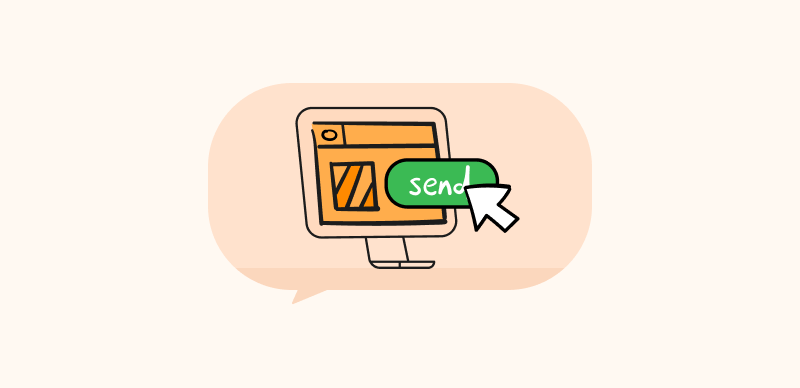
What is Web Design Project Management?
The process of creating a new website or redesigning an existing one has multiple stages and requires contributions from many professionals, including web designers, graphic designers, back-end developers, system administrators, etc. The people in charge of the project are responsible for maintaining communication between all team members and making sure that all tasks are completed in time and according to instructions, eventually leading to completion.
Web design project management may become a weak spot if it’s not handled professionally, potentially resulting in late delivery or another type of failure. The use of advanced project management software dramatically reduces the risk of any serious issues jeopardizing the endeavor. Tools of this kind give team leaders the possibility to spot any deviations from the plan early and react promptly to website mockup and resolve any issues. The main objective is to maintain close oversight over all project activities and ultimately create the best product possible.
Further Reading: What Is Adaptive Web Design >
5 Project Management Methodologies for Website Development
Web design teams usually adopt a primary software development methodology to guide them through the process and ensure rational utilization of available resources. There are several commonly used methodologies that web design companies might find useful, and we will provide a brief overview of the most popular ones:
Kanban
This time-tested approach to project management is not exclusive to software development, but it produces excellent results in this field. It relies on a system of boards and cards to represent resources, processes, and outcomes. The main advantage of using this method is the ability to rationally use the available assets to meet the demand in the market.
Agile
Teams that require flexibility and adaptability usually gravitate towards Agile methodologies. This approach simplifies even the most complex tasks into smaller units called sprints. Since sprints can be completed quickly and discussed by the entire team immediately, an Agile project can be steered in any direction with minimal preparation.
Scrum
While from the outside a Scrum-based project may look chaotic, this approach was proven in practice to stimulate creative solution of difficult problems. There are no fixed roles in this methodology, apart from the Scrum Master who is coordinating the contributions of other members and keeping the project moving in the right direction.
Waterfall
In cases when the project cycle is well defined from start to finish and no surprises are expected, Waterfall method might be the best choice. It is focused on streamlining the connected tasks and shortening the execution time, albeit at the cost of flexibility. Since routine web design projects (i.e. creating a corporate website) follow a straight path, this method could be very useful.
Critical Path
The objective of this method is to identify the most critical steps in the process that affect the length of the path to project completion. Once identified, these tasks can be prioritized and closely monitored to ensure they don’t hold up the whole chain. This methodology can be very impactful on some types of web design projects.
10 Best Web Design Project Management Software
Asana
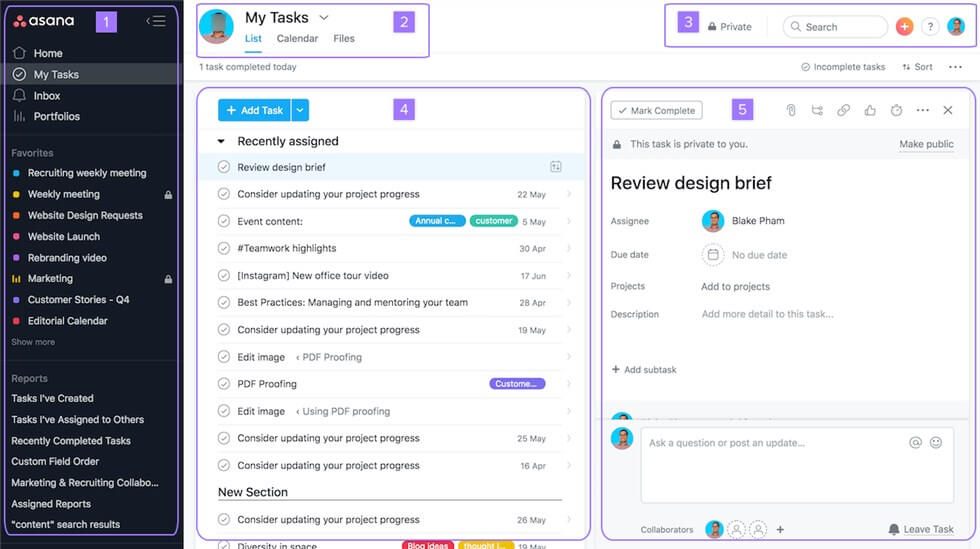
Asana Interface
Asana is a popular project management suite that can support different methodologies and workflows. This kind of flexibility is most welcome in the web design sphere, where teams may need to change their approach from project to project. This software also enables companies to combine work done by different teams and facilitate remote work procedures.
Core features:
- Product development and project management platform well suited for the software industry
- Cross-team visibility and instant updates minimize redundant work and misunderstandings
- Real time workload control and progress reporting keep the managers informed
- Process automation can save a lot of time and reduce overall development costs
Biggest downsides:
- Small projects can be time-consuming to set up due to the abundance of options
- Additional granularity for task completion status would be welcome
Pricing: Basic plan is forever free, Premium plan costs $10.99 per user/month, Business plan is offered for $24.99 per user/month
Customer feedback:
- G2: 4.3 (9 326 reviews)
- Capterra: 4.5 (11 982 reviews)
Basecamp
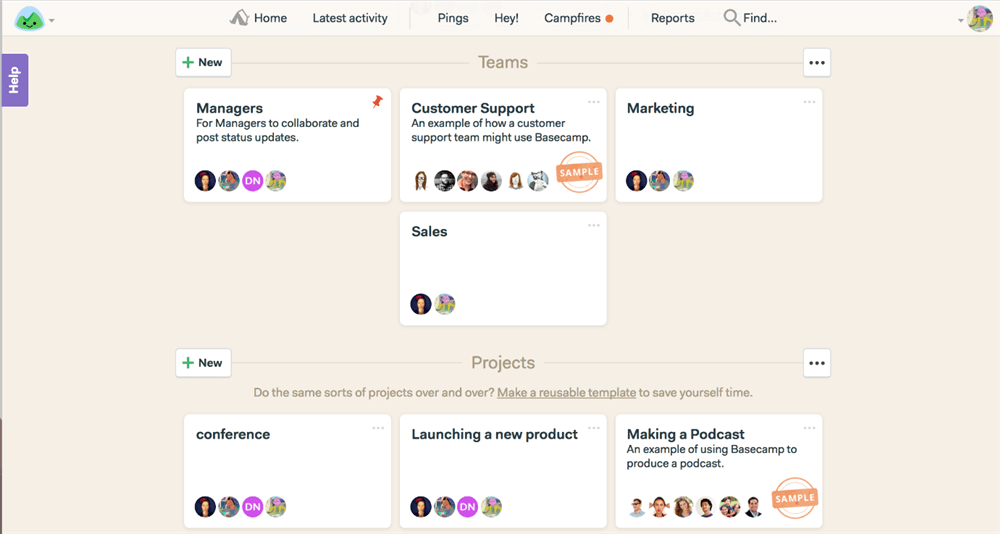
Free SmartSheet Alternative – Basecamp
This is another productivity and collaboration platform that is commonly used by software developers due to its informal but efficient nature. Basecamp allows team members to stay in constant communication no matter where they are located, while giving managers precise insights about the performance of each member and the current status of key tasks.
Core features:
- Centralized project management platform that connects teams and facilitates teamwork
- Enables full visibility within the team and enables easy document sharing
- Scheduling function is integrated with task allocation without the need for a calendar app
- Message board feature serves to keep communication focused on the topic
Biggest downsides:
- This platform is not well equipped to support Agile projects
- The software can slow down in some instances (i.e. when working with large files)
Pricing: Basic package costs $15 per user monthly, Pro Unlimited package is offered for a flat monthly rate of $299 regardless of the number of users
Customer feedback:
- G2: 4.1 (5,209 reviews)
- Capterra: 4.3 (14,131 reviews)
Hive
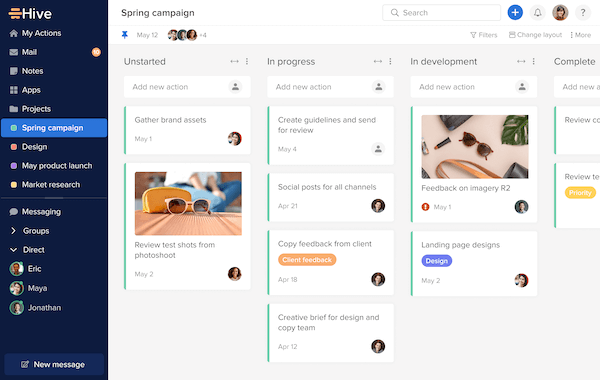
Hive Interface
Designed as a one-stop platform for all project-related activities, Hive is one of the more imaginative and innovative products in its class. It was created with hybrid work in mind and it takes user feedback into account when introducing new features. Considering all of its strengths, it won’t be a surprise if more website development teams move their business to Hive.
Core features:
- Management platform for hybrid teams with built-in multi-step approvals
- Project and action templates are provided to help set up new endeavors quickly
- Progress towards individual tasks and big picture objectives can be tracked visually
- Interactive video meetings that allow notes to be turned into actionable items
Biggest downsides:
- It’s not possible to automatically move all tasks from one user to another
- Mobile application can’t match the functionality of the desktop version
Pricing: Free plan is available, Team plan costs $12 per user monthly
Customer feedback:
- G2: 4.6 (435 reviews)
- Capterra: 4.5 (180 reviews)
Workamajig
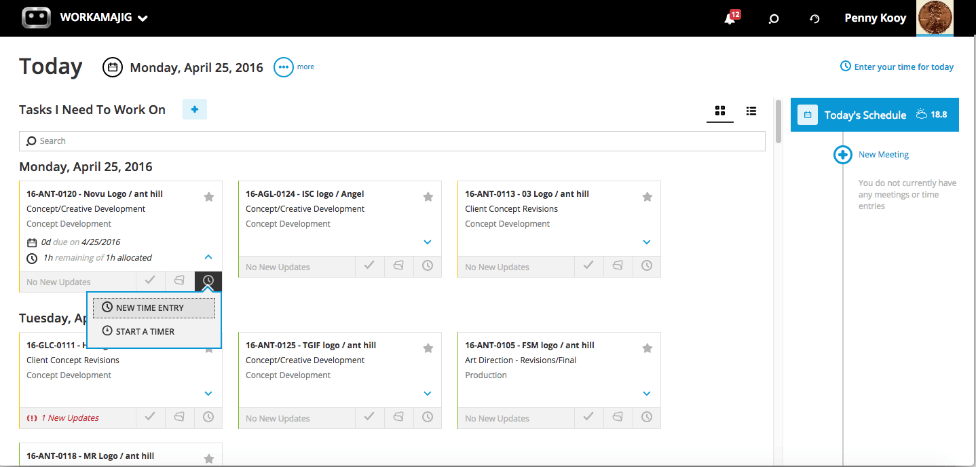
Workamajig Overview
The most frequent users of this interesting project management suite are creative teams looking to increase their output and streamline their work processes. Workamajig brings together all the essential functionalities needed to take a web design project across the finish line, from mapping the workflow to delivering a fully operative web-based solution.
Core features:
- Project management platform optimized for creative production and software development
- Accelerated task approval process lets professionals advance faster to the next task
- All briefs, discussions, statuses, and calendar items can be accessed remotely from any device
- A different dashboard is created for each user based on his team role
Biggest downsides:
- Very steep learning curve, particularly for users who want to customize the solution
- Too expensive for small web design studios
Pricing: Both In-House and Agency plans are priced at $41 per user per month
Customer feedback:
- G2: 3.6 (204 reviews)
- Capterra: 3.7 (306 reviews)
FunctionFox
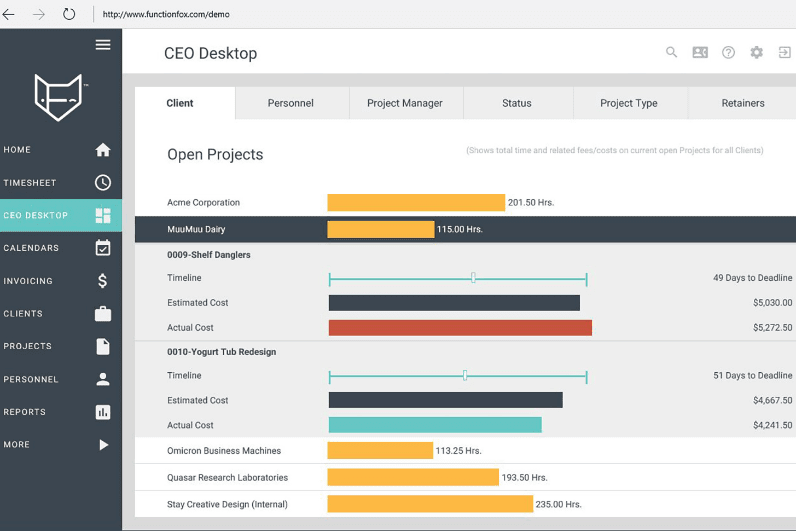
FunctionFox Interface
Every hour saved on administration with the help of this practical and user-friendly software can be spent on refining a web design project’s creative or technical aspects. FunctionFox gives software development teams the possibility to handle multiple clients or projects at once while staying on schedule and avoiding internal communication issues.
Core features:
- Time tracking, task scheduling and budgeting solution rolled into a single platform
- Project planning tools including Gantt charts and prioritization of key tasks
- Intra-team communication can be channeled through an internal blog
- Detailed reports about all activities are generated based on tracked activities
Biggest downsides:
- This software doesn’t have a Kanban boards feature
- Automation of frequently repeated tasks is not possible
Pricing: Classic plan is offered for $5 per user/month ($35 for first user), Premier plan costs $10 per user monthly ($50 for first user)
Customer feedback:
- G2: 4.3 (48 reviews)
- Capterra: 4.5 (186 reviews)
Airtable
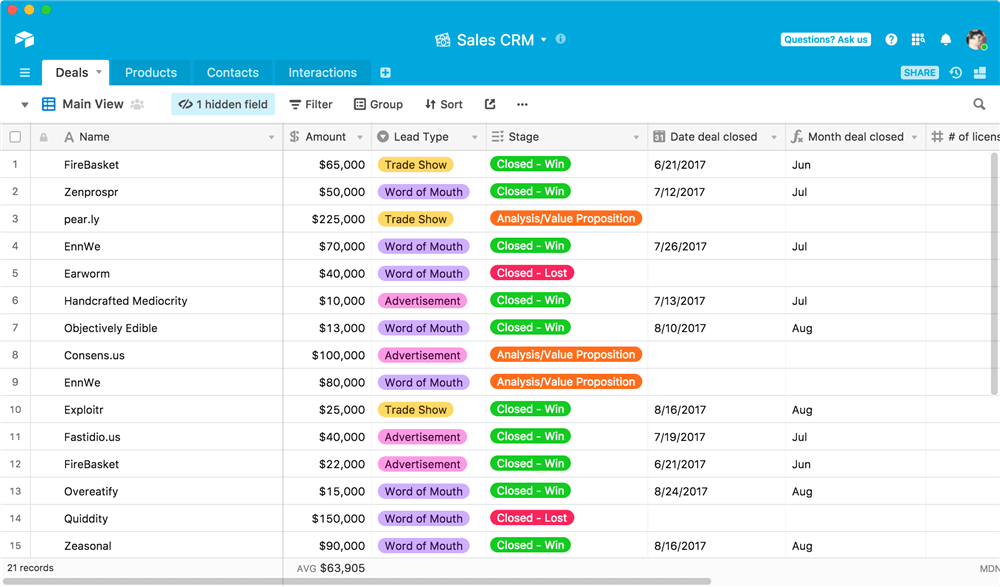
Best Organizational Tool – Airtable
Widely recognized as one of the most flexible and innovative platforms for directing software products, AirTable makes things very simple and allows a change of plans at every moment. That’s why it can support multiple methodologies and provide a lot of value for teams of any size, while letting the team stay connected and share all resources without any effort.
Core features:
- Unique project management suite that lets users build-no code apps based on shared databases
- Customized interfaces keep every team member informed about his duties
- All data is automatically synchronized across the organization
- Templates for various types of projects are available to deploy immediately
Biggest downsides:
- E-mail automation is difficult to set up and sometimes doesn’t work properly
- There is no multi-language support
Pricing: Free plan is available, Plus plan costs $10 per seat monthly, Pro plan is offered for $20 per user monthly
Customer feedback:
- G2: 4.6 (2,126 reviews)
- Capterra: 4.7 (1774 reviews)
Wrike
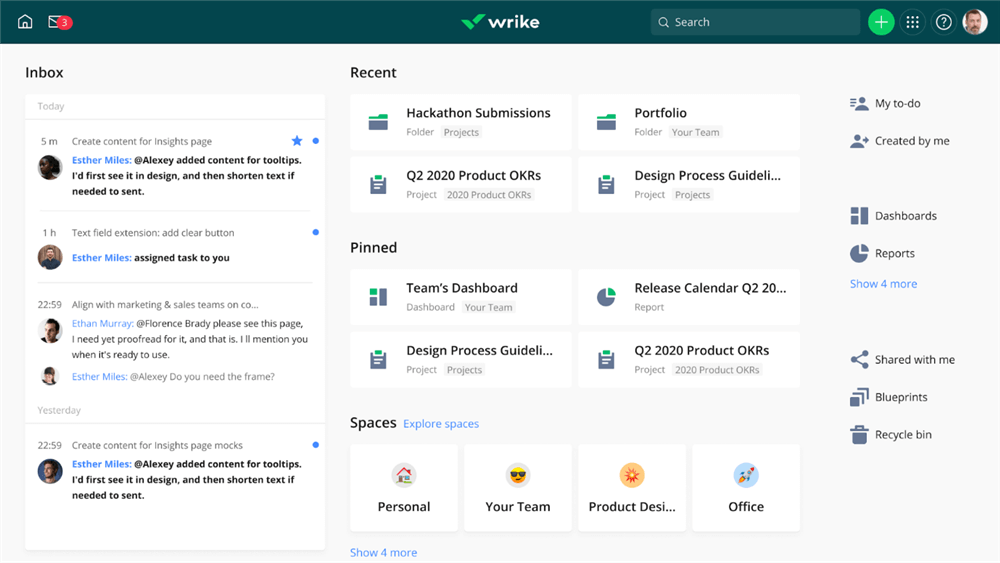
Wrike Interface
Design and development teams can accomplish any objective and follow any type of workflow when they are coordinating their activities with Wrike. When all people within an organization are in sync at every moment, a productivity boost is just a logical consequence. Every step of the journey towards a finished website can be easily tracked and documented.
Core features:
- Adaptable productivity platform that supports multiple project views
- High level of customization and automation capacities is provided
- Prepared templates for different types of projects, including Agile and Creative
- Very secure solution with role-based access control and encryption keys
Biggest downsides:
- Experienced manager is needed to set up and administrate the project
- Only high-end plans include advanced reporting features
Pricing: Free plan is available, Team plan costs $9.80 monthly per user, Business plan costs $24.80 per user per month
Customer feedback:
- G2: 4.2 (3307 reviews)
- Capterra: 4.3 (2370 reviews)
WP Project Manager
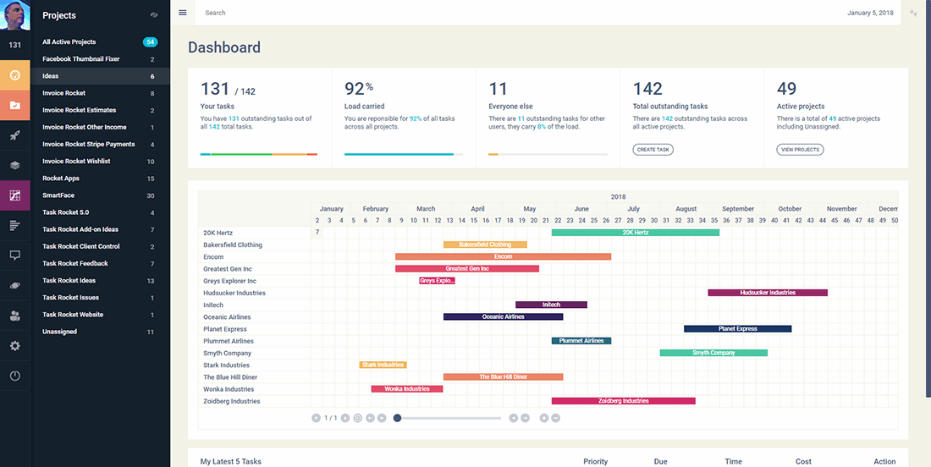
WP Project Manager
Teams that focus most of their work on WordPress websites can take advantage of this simple but effective task management tool. WP Project Manager allows users to quickly exchange information, collaborate on practical tasks, and meet their deadlines every time. It has all the features you would expect from a top-tier project management tool, but it doesn’t confuse the user with too many options.
Core features:
- Efficient tool for managing all aspects of building a WordPress website
- Dashboards and Kanban boards can be used to visualize the workflow
- Items can be simply dragged and dropped in Calendar to reflect the latest changes
- Recurring tasks can be assigned automatically
Biggest downsides:
- Search function is very basic and doesn’t include any filters
- There is no dedicated mobile application
Pricing: Personal plan costs $296, the Professional plan is offered for $522, and while Business plan requires a one-off payment of $809
Customer feedback:
- G2: 4.5 (3 reviews)
- Capterra: 4.5 (2 reviews)
Accelo
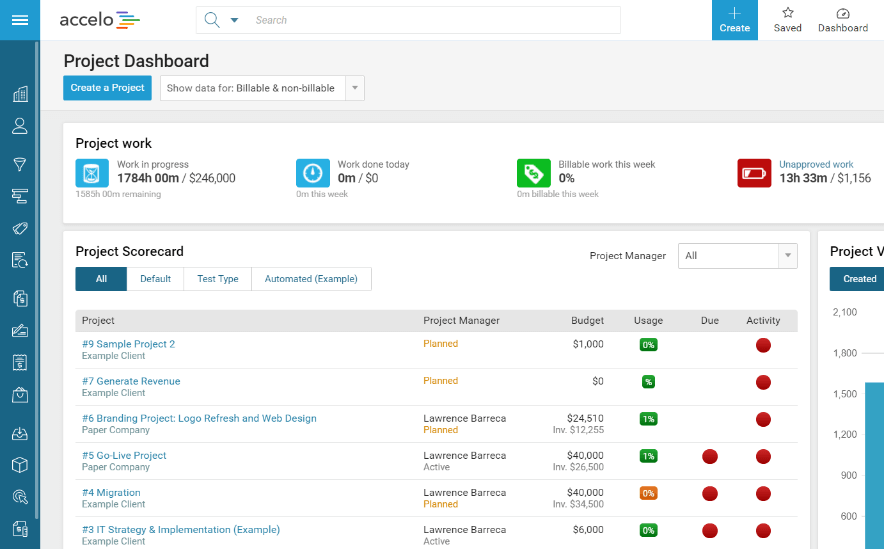
Accelo Interface
Any organization looking to maximize the value of its services would be wise to adopt this end-to-end work management software. Accelo provides assistance in every stage of the process, from finding new clients to delivering the product and collecting the revenue. Teams that use this software tend to have more hours to sell, all because they are not wasting them on non-essential actions.
Core features:
- Cloud-based work management system intended for service-oriented businesses
- Intuitive task boards can be changed by dragging and dropping an item
- Centralized view of expenses and scheduling keeps the project profitable
- Generating insightful reports about any part of the organization is very simple
Biggest drawbacks:
- Pages don’t update automatically and manual refreshing is necessary
- Setting up complex projects can be challenging
Pricing: Free trial is available, Plus plan costs $24 per user per month, Premium plan costs $39 per user monthly
Customer feedback:
- G2: 4.4 (482 reviews)
- Capterra: 4.4 (155 reviews)
BigTime
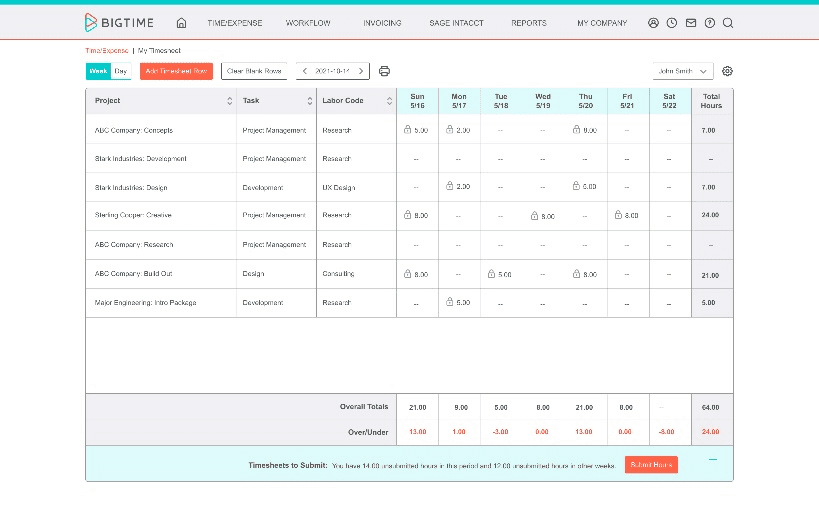
BigTime Interface
This software serves to keep track of the time spent on each task and centralize all projects the organization undertakes within the same workspace. BigTime is one of the leading Professional Services Automation (PSA) platforms that can greatly accelerate the pace of work for creatively oriented businesses, including web development studios that work with multiple clients.
Core features:
- Enterprise-level time tracking and service automation platform that supports remote work
- Managing deadlines and deliverables is simplified to the maximum
- Time tracking is directly connected to billing and performance analytics
- The app facilitates very swift and efficient multi-level approval process
Biggest downsides:
- Too many metrics can be confusing for beginners
- It can be difficult to customize the invoices
Pricing: Express plan costs $10 per user per month, Pro plan costs $30 monthly per user, Premier plan is offered for $40 per user monthly
Customer feedback:
- G2: 4.5 (1205 reviews)
- Capterra: 4.6 (611 reviews)
FAQs about Web Design Project Management Software
How can web designers and developers benefit from using project management software?
Professionals who perform key tasks related to creating web applications can work more efficiently if they always know which tasks are the priority, how much time is there left to complete them, which resources are available, etc. All of those insights can be obtained from a project management solution.
How can team managers use productivity software to achieve more with less?
Coordinating the work of multiple contributors in real time is much easier when all progress can be monitored from a single dashboard. This is why team leaders are among the biggest beneficiaries of a work management solution, especially if they are able to customize it to their liking.
What is the best project management solution for a growing web design company?
Companies that are planning expansion in the next period should choose project management software that scales well and allows easy addition of new users and projects. That’s why a flexible platform like Hive or Basecamp could be the best choice for an emerging web design company.
Conclusion
To provide creative professionals with clarity and managers with fresh insights at all times, teams working on web design projects should coordinate their activities through a work management platform. This article compares pros and cons of numerous software suites that could work well in this role, but since every organization has unique needs there might not be one universally best solution that would work for everyone. Feel free to suggest a solution you believe is the best in the comments.

